【Learning points】
- Urinary incontinence is a symptom of lower urinary tract dysfunction, in which urine leakage cannot be controlled by consciousness. It is detectable and can cause personal social or hygiene problems.
- When using a diaphragm for men, pay attention to the fixed tightness. If it is too tight, it will cause ulceration or swelling of the penis.
- The most important care principle when using a diaper is to keep it clean and avoid direct contact with urine, which may irritate the skin and cause inflammation. Therefore, it is important to fix it correctly. If there is excessive urine output or leakage, it should be replaced immediately to avoid causing skin irritation. Redness and discomfort.
I.What is urinary incontinence?
Urinary incontinence is a symptom of lower urinary tract dysfunction, inability to consciously control the leakage of urine, which can be noticed and causes personal social or hygiene problems.
II. Reason
There are many causes of urinary incontinence, which can be roughly divided into the following two types:
- Temporary urinary incontinence:
Common causes such as: mental illness, infection, atrophic urethritis or vaginitis, delirium, limited mobility, constipation, etc. Or it may be caused by drugs (such as diuretics, sedatives, alcohol, or narcotics), diet (such as caffeine, alcoholic or non-alcoholic beverages, chocolate, peppers, or citrus fruits). - Chronic urinary incontinence:
- Caused by changes in physical conditions, such as: pregnancy, childbirth, getting older, hypertrophy of the prostate gland, prostate cancer, and urinary tract stones.
- Caused by neurological disorders, such as:Dementia, stroke, brain tumor, spinal cord disease, multiple sclerosis.
III.Classification and symptoms of urinary incontinence
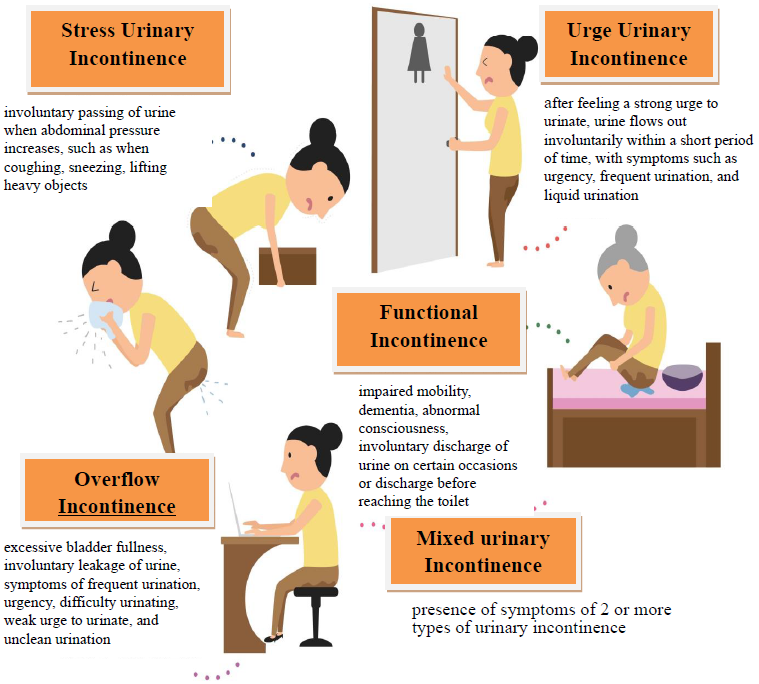
IV.How to use a diaper
- Materials: soap, water, urine sheath, gauze (or urine plastic sleeve fixing belt).
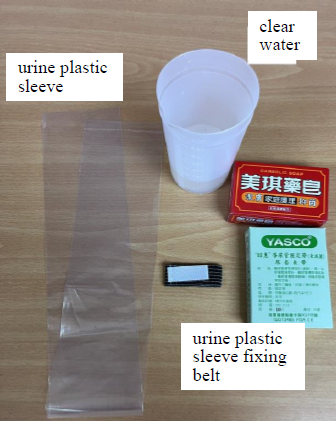
- Steps for putting on urine plastic sleeve:
- Wash your hands first, wash your perineum and penis with soap and water, and then dry them.
- Gently cover the penis with a urine plastic sleeve, and tie the urine plastic sleeve to the penis with gauze (or urine plastic sleeve fixing belt ).The gauze (or urine plastic sleeve fixing belt) should be fixed tightly and properly, so that the urine plastic sleeve can be pulled lightly without falling off. Do not overtighten as this can cause ulceration or enlargement of the penis.

- How to remove the urine plastic sleeve:
- Wash your hands first, untie the gauze (urine plastic sleeve fixing belt), and remove the urine plastic sleeve.
- After washing the penis with clean water, wipe it dry, keep it exposed for 10 minutes to dry it, and then put on a new urine plastic sleeve.
- The location of the urine plastic sleeve
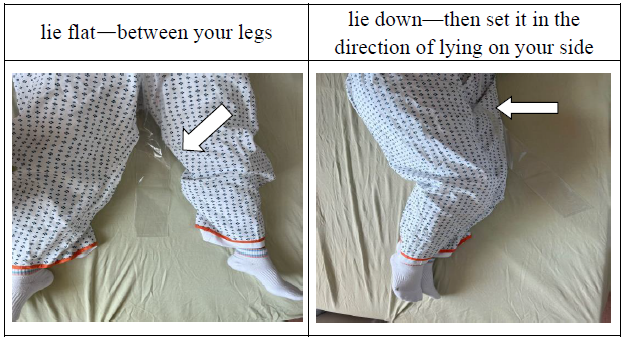
V.Caution
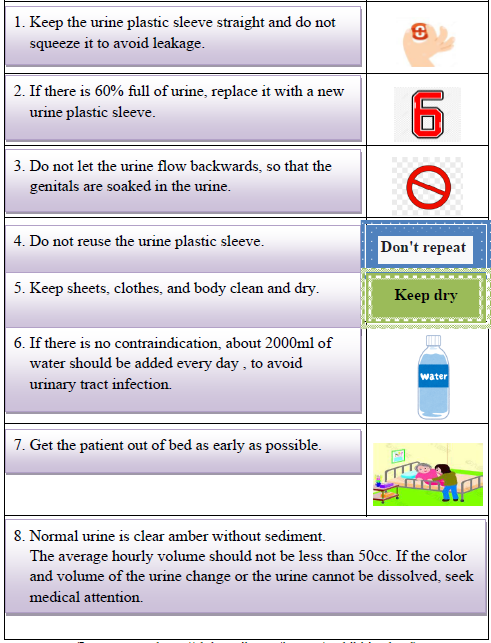
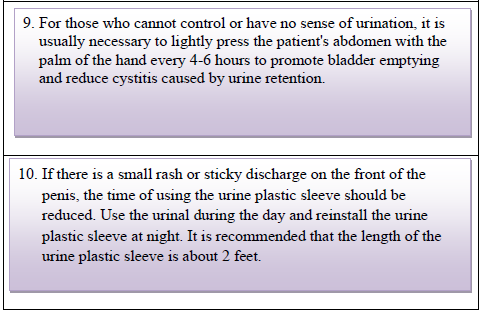
VI.Conclusion
The most important care principle for using a urine plastic sleeve is to keep it clean and avoid direct contact with urine, which can irritate the skin and cause inflammation. Therefore, it is very important to fix it correctly. If there is too much urine or leakage, it should be replaced immediately, so as not to cause skin redness and uncomfortable.
VII.References
- Taiwanese Continence Society. (November 4, 2022). Nursing assessment of patients with urinary incontinence. Retrieved from https://www.tcs.org.tw/community/disease_info.asp?/676.html
- Hsieh, P.L. (2021). Nursing care of urinary system diseases In Liu, X.E(Eds.), Adult medical and surgical nursing (Volume II) (8nd ed., pp. 850-857). Hua Xing.
簡易測驗
Let's take a test to confirm that you have a thorough understanding.
評語
統計結果不開放
請登入後才可以評分
未登入或權限不足!
- 位置
-
- 資料夾名稱
- English
- 上傳者
- 楊欣宜
- 單位
- 中榮護理衛教
- 英文名稱
- Urinary incontinence - care for males using urine plastic sleeve
- 分類
- 治療
- 科別
- 英語
- 癌症照護
- 否
- 建立
- 2024-01-25 14:50:30
- 制訂日期
- 2023-05-03
- 最近修訂
- 2024-03-19 11:52:00